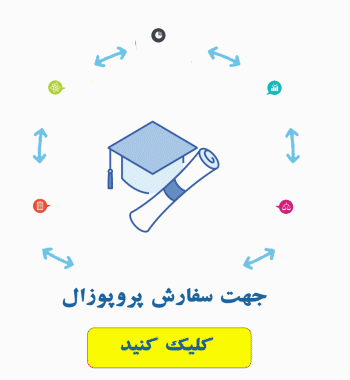 عنوان پروپوزال: بررسی رابطه گرایش بازاریابی رابطه بر ارزش برند در بانک ها: مطالعه مورد بانک ملی استان تهران
عنوان پروپوزال: بررسی رابطه گرایش بازاریابی رابطه بر ارزش برند در بانک ها: مطالعه مورد بانک ملی استان تهران
 رشته تحصیلی: بازاریابی
رشته تحصیلی: بازاریابی
 مقطع: ارشد
مقطع: ارشد
 تعداد صفحات: ۲۰ صفحه
تعداد صفحات: ۲۰ صفحه
 فرمت: Word
فرمت: Word
[stextbox id=”grey” caption=”فهرست آیتم های پروپوزال” collapsing=”true” mode=”js” direction=”rtl” shadow=”false”]
- بیان مساله
- پیشینه پژوهش
- فرضیات پژوهش
- فرضیه اصلی
- فرضیات فرعی
- سوالات پژوهش
- سوال اصلی
- سوالات فرعی
- اهداف پژوهش
- هدف اصلی
- اهداف فرعی
- اهداف کاربردی
- مدل مفهومی پژوهش
- ادبیات موضوعی
- روش پژوهش
- روش جمع آوری اطلاعات
- روش تجزیه و تحلیل اطلاعات
- جامعه آماری
- قلمرو پژوهش (زمان، مکان، موضوع)
- منابع
- همراه با مقاله بیس
[/stextbox][stextbox id=”grey” caption=”مختصری از توضیحات” collapsing=”true” collapsed=”true” mode=”js” direction=”rtl” shadow=”false”]
Customer equity has become one of the key marketing objectives of today’s business organizations due to its ability to assess individual customers and customer segments from a value perspective (Rust et al. , ۲۰۰۰). Customer equity is a combination of the value of a firm’s current and potential customer assets (Hogan et al. , 2002). It includes value of a firm’s entire customer base or aggregation of individual customer’s life time values (Bruhn et al. , 2008). It is viewed as the basis for a new strategic framework to build more powerful and customer-centric marketing programs that are financially accountable and measurable (Lemonet al. , 2001).
Customer equity can be measured as “the total of the discounted lifetime values summed over all of the firm’s current and potential customers” (Rust et al. , 2004). The drivers of customer equity are value equity, brand equity and relationship equity (Lemon et al., 2001). In order to maximize the long-term performance of a company, marketing managers require pursuing a more accountable marketing investment by continuous monitoring of these three drivers of customer equity.
This enables the managers to detect signals of erosion in specific driver(s) of customer equity and to launch suitable programs to enhance it. Customer loyalty has significant positive impact on the profitability of business to business firms. Loyal customers offer a steady stream of revenue for a company by staying with the same supplier and rejecting the competitors (Lam et al. , 2004). In B2B context, loyal customers are more likely to focus on long-term benefits and engage in cooperative actions beneficial to both partners and thus enhance competitiveness for both organizations by reducing transaction costs (Doney and Cannon, 1997; Ganesan, 1994).
However, most business service providers face considerable challenges due to the complex nature of the B2B market, increased competition, higher degree of deregulation, technological convergence, rapid evolution of internet (Wong et al. , ۲۰۰۹), and tailored nature of the offered products and services. Creating a loyal customer base in B2B context is not only about maintaining customers overtime but also nurturing relationships with business customers to encourage their future purchase and level of advocacy (Rauyruen and Miller, 2007).
[/stextbox]
 پژوهش های برتر | پروپوزال آماده، مدیریت استراتژیک شرکت ها، پلن های کسب و کار
پژوهش های برتر | پروپوزال آماده، مدیریت استراتژیک شرکت ها، پلن های کسب و کار


